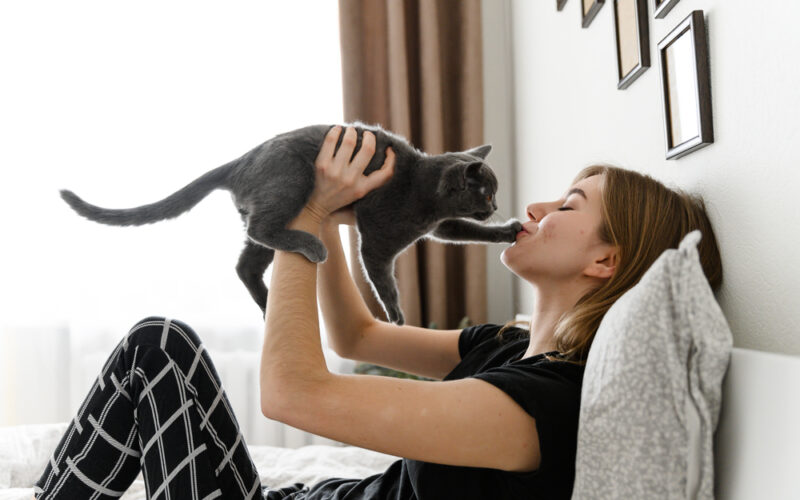Different animals can provide companionship in various ways. When considering an emotional support animal (ESA), understanding your lifestyle, living space, and individual circumstances helps inform discussions with healthcare providers about which type of animal might best suit your situation.
Understanding ESA Selection Factors
Living space plays a significant role in animal companionship. Larger animals like dogs typically need more room to move and exercise, while smaller animals might adapt better to apartment living. Consider your available space, including outdoor access and any housing restrictions that might affect animal companions.
Time availability represents another important consideration. Some animals need more daily interaction and care than others. Dogs often require regular walks and training, while cats typically maintain more independent routines. Smaller animals like rabbits or guinea pigs have their own specific care requirements.
Financial considerations include not just initial costs but ongoing expenses. Different animals have varying needs for food, supplies, and veterinary care. Understanding these long-term commitments helps in planning for animal care responsibilities.
Dogs as Emotional Support Animals
Dogs represent one common choice for emotional support animals. Different breeds have varying energy levels, size requirements, and care needs. Some breeds naturally maintain calmer dispositions, while others show more energetic tendencies.
Larger breeds like Labrador Retrievers and Golden Retrievers generally need more space and exercise. Medium-sized breeds such as Poodles and Collies adapt to various living situations. Smaller breeds like Cavalier King Charles Spaniels or French Bulldogs might suit apartment living.
Consider exercise requirements when thinking about dog companionship. Some breeds need multiple daily walks and active playtime, while others maintain lower energy levels. Weather conditions and your physical activity preferences may influence these considerations.
Cats as Emotional Support Animals
Cats often adapt well to indoor living and typically require less outdoor activity than dogs. Their independent nature might suit individuals with varying schedules or limited time for pet care. Different cat breeds show different personality tendencies and interaction preferences.
Some breeds, such as Ragdolls and Maine Coons, often display more social behaviors. Others, like British Shorthairs or Persian cats, might prefer quieter interactions. Consider grooming needs as well – longhaired breeds typically require more regular maintenance than shorthaired varieties.
Cat companionship often involves different types of interaction than dog companionship. Cats may show affection through quiet presence rather than active engagement. Their space requirements typically focus more on vertical territory than floor space.
Alternative Support Animals
Smaller animals offer different companionship experiences. Rabbits, guinea pigs, and hamsters each have distinct care requirements and interaction styles. These animals might suit situations where space or time limitations affect larger animal care.
Birds represent another option, with different species showing varying social tendencies. Some birds maintain highly social behaviors, while others prefer limited interaction. Consider noise levels, space requirements, and longevity when thinking about bird companionship.
Reptiles provide yet another alternative, though their care requirements differ significantly from mammals. Temperature control, specialized diets, and specific habitat needs factor into reptile care considerations.
Making Your Decision
Consider daily routines when thinking about animal companionship. Different animals naturally align with different schedules and lifestyle patterns. Morning people might adapt well to dogs’ early activity preferences, while night owls might appreciate cats’ flexible schedules.
Living situation stability also influences animal selection. Some animals adapt better to changes in routine or location than others. Consider your future plans and how they might affect animal care capabilities.
Local regulations may affect animal companionship options. Some areas maintain specific rules about certain types or sizes of animals. Housing agreements might also influence available choices for animal companions.
Long-term Responsibilities
Animal care involves ongoing commitment to health and wellbeing. Regular veterinary care helps maintain animal health, while proper diet and exercise support daily wellness. Different animals have varying lifespans, affecting long-term care planning.
Financial planning helps ensure continued ability to provide proper care. Consider setting aside funds for routine care as well as potential emergencies. Insurance options exist for some types of animals, potentially helping manage unexpected costs.
Professional Guidance
Healthcare providers can discuss how different types of animal companionship might fit into your individual situation. These professionals consider various factors when helping explore options for emotional support animals.
Questions about emotional support animals? Schedule a consultation with Heally today to connect with healthcare providers who can discuss what options might work best for your situation.
Sources
The Journalist’s Resource: From best friend to therapist: Research on emotional support animals
American Kennel Club: Everything You Need to Know About Emotional Support Animals

